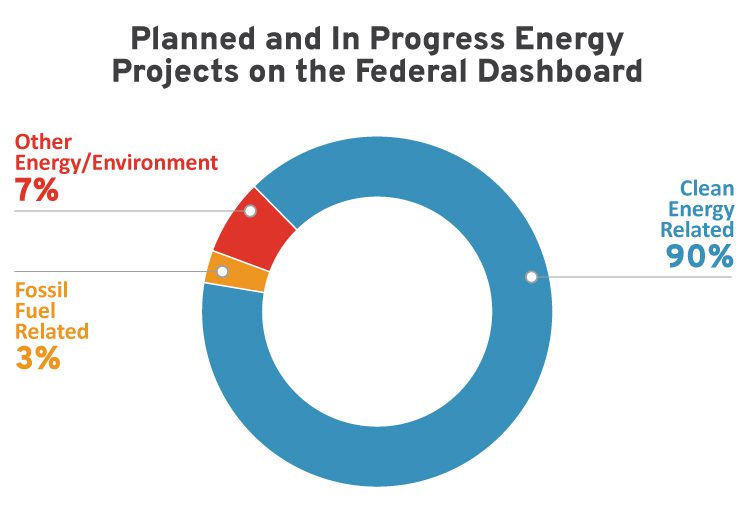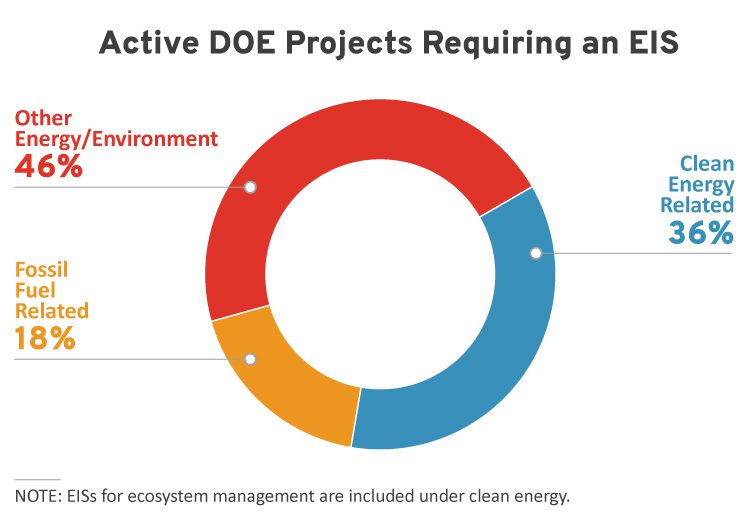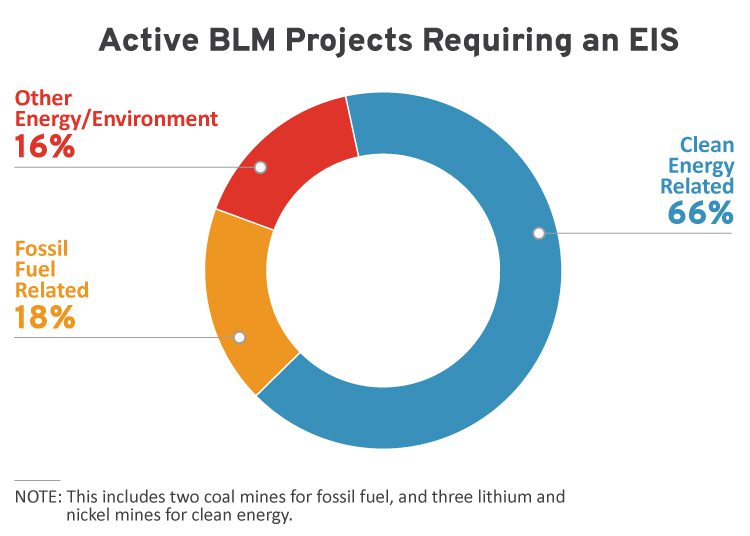Current Share of Energy Projects Requiring High-Level Review that Are Clean Energy

Source: Federal Permitting Dashboard. Last accessed July 2023.
by Philip Rossetti
The federal government implemented a partial permitting reform earlier this year as part of the law that raised the debt limit. Additional changes to federal permitting are likely needed, as there are still major issues related to judicial review and consistency of treatment for technologies with similar environmental footprints. In the past, R Street has pointed out that these reforms are more likely to impact clean energy technology, as they represent a disproportionately large share of projects that require the highest level of federal permitting. Research that R Street performed in 2021 has been widely cited. This analysis serves as a simple update to those findings.
There are three major indicators of federal permitting in energy projects: the Federal Permitting Dashboard, the Department of Energy’s (DOE) Office of National Environmental Policy Act (NEPA) Policy and Compliance and the Bureau of Land Management’s (BLM) National NEPA Register. Each is a window into the permitting of different technologies.
The Federal Permitting Dashboard covers projects that are classified as federal infrastructure projects. Any project that undergoes the accelerated permitting process outlined by the Title 41 of the Fixing America’s Surface Transportation Act (FAST-41) is on the Dashboard, as are other major projects that have federal involvement. Importantly, projects that are on the Dashboard are sometimes also permitted by the BLM or DOE. The Dashboard is an overview of major projects, but not all projects.
The DOE’s Office of NEPA Policy and Compliance tracks major projects that require DOE permits, as well as projects that fall under Federal Energy Regulatory Commission (FERC) jurisdiction because FERC is organized under the DOE. This includes projects like natural gas terminals and interstate transmission lines, as well as hydroelectric projects and more. The DOE is also responsible for permitting related to DOE facilities, so projects managed by the National Laboratories are also reflected in the DOE’s permitting data.
The BLM is a part of the Department of Interior and oversees permitting related to projects on federal land. This covers a huge number of oil and gas projects, as well as renewable energy projects. Some transmission projects are also permitted by the BLM, and they also permit mines (including coal mines).
Updated Findings
Below, we present figures that summarize R Street’s updated findings. These figures reflect the active/planned energy-related projects that require high-level environmental review from each of the three sources noted above. The findings are broken down into percentages for three categories: clean energy related projects, which include transmission (similar to the BLM categorization) and mining for minerals utilized in clean energy (lithium and nickel); fossil fuel related projects (pipelines, LNG terminals, coal mines, etc.); and other energy or environmental projects (non-energy-specific mining, retiring of nuclear power plants, management of hazardous materials, etc.). Of note, only projects that are currently active or planned and that require an Environmental Impact Statement (EIS) (the highest level of environmental review) were included in our analysis. Thus, these charts do not reflect total projects, but rather major projects that require stringent environmental review.

Source: Department of Energy Office of NEPA Policy and Compliance. Last Accessed July 2023.

Source: Bureau of Land Management National NEPA Register database. Last accessed July 2023.
Conclusion
In 2021, R Street concluded that large energy projects requiring an EIS are the most significantly impacted by permitting delays and that more of these projects were related to clean energy, transmission or conservation than to fossil fuel. A broader and more recent observation of the data shows that this remains true and that clean energy is likely to be the largest beneficiary of permitting reform.
Further, while not shown in the data above, it is important to note that a major point from past R Street work still holds true: The disproportionate number of clean energy projects that require EISs demonstrates that these projects require higher levels of environmental review more often than fossil fuel projects. A major reason for this is because much of fossil fuel production is “categorically excluded” from NEPA, owing to its well understood environmental impacts. From a policy perspective, Congress would be wise to pursue additional permitting reform, especially policies that are likely to expedite the preparation of EISs.


